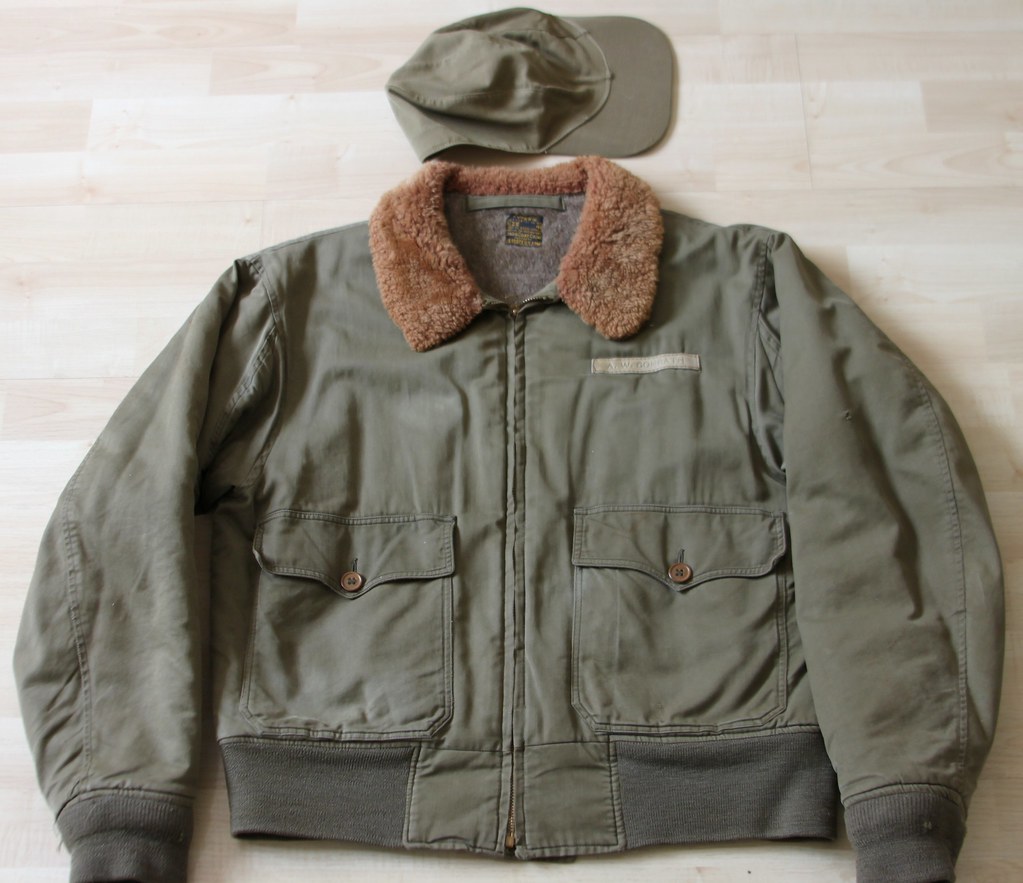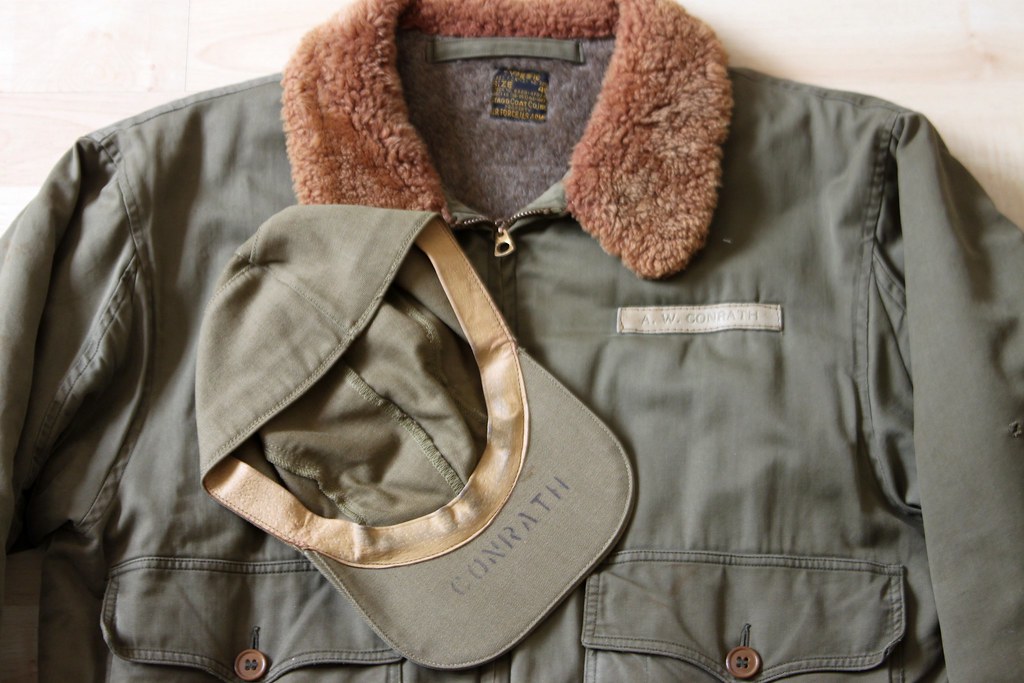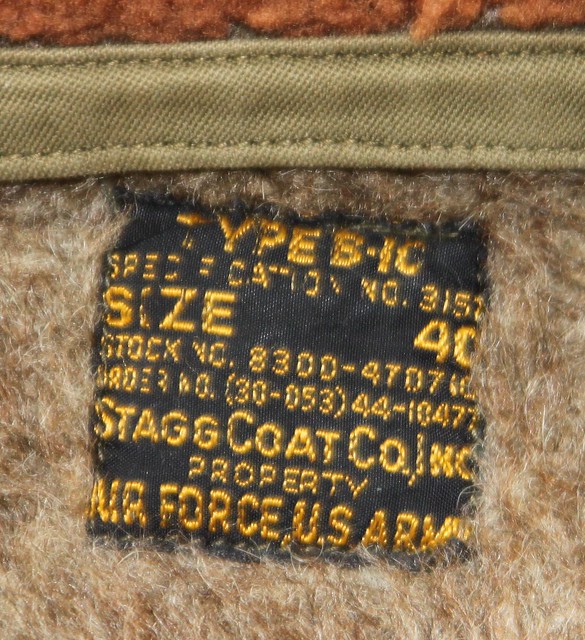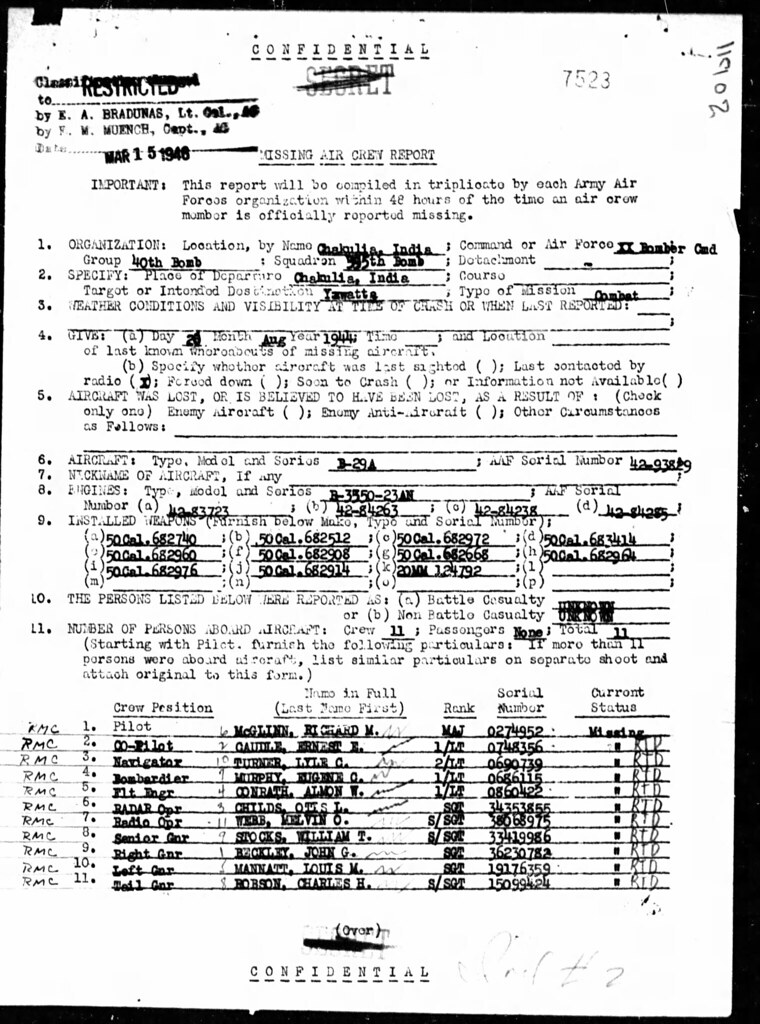bombs away
Member
Hello,
Here is an original B-10 jacket from Stagg Coat, size 40.
A nice jacket, in a very good condition for an original B-10.
The nameplate gives the name of the owner : Almon W CONRATH
The name is alson stenciled inside the jacket on the windflap.
The jacket came with a B-1 cap, with the name also stenciled on the visor.
A great grouping.





But what I like more is the story coming with this small grouping :
Almon W. CONRATH worked at International Harvester in Indianapolis before being drafted for WWII in 1942. In 1943, Al was commissioned as a 2nd Lieutenant and was assigned to be a B-29 Flight Engineer in the 20th Air Force, 40th Bomb Group. Al was on the first B-29 strike against the Japanese homeland in June 1944. Their target was the Steel Works at Yawata. On their second strike at Yawata, Aug. 20, 1944, Al's plane lost an engine under heavy anti-aircraft fire and fighter attacks. Fourteen planes were lost during this raid. The B-29 would not be able to make the 1,500 mile trip back to the base, so the crew had to bail out. Stormy weather made them uncertain whether they were over the USSR (our ally then) or Japanese-occupied China. They jumped into the darkness, and landed in the Siberian wilderness. The region, north of Vladivostok and east of Khabarovsk, was mountainous, dense with forest, and unpopulated.
For 27 days the men relied on survival skills while walking downstream in hopes of finding civilization. When they were located, it took four more days for the men to be rescued, then another four days by canoe and horseback to get out of the wilderness. During the next four months, the crew was interned in Russian hospitals or camps. They communicated with the locals by sign language or in broken German. None of the crew knew when they were going to go home.
Finally, in January 1945 they were taken by troop train across Siberia to Tashkent, and the journey home began through Iran. The crew landed in the U.S. on March 6, 1945, and was sworn to secrecy about their experiences in order to protect wartime U.S.-USSR relations. In 1992, Lt. General Thomas G. McInerney, Asst.Vice Chief of Staff, U.S. Air Force, pinned the Prisoner of War Medal on Al. Al had various assignments after being in Russia, eventually serving as Chief Flight Engineer at the Western Flight Training Command, where he was promoted to Captain. He separated to the Reserves in January 1946 and then was recalled for Korean service.
Al has passed away in november 2009.

If you want to read more about this crew's amazing adventure, spend a little time following these links :
http://www.40thbombgroup.org/memories/Memories42.pdf
http://www.40thbombgroup.org/memories/Memories44.pdf
Tim
Here is an original B-10 jacket from Stagg Coat, size 40.
A nice jacket, in a very good condition for an original B-10.
The nameplate gives the name of the owner : Almon W CONRATH
The name is alson stenciled inside the jacket on the windflap.
The jacket came with a B-1 cap, with the name also stenciled on the visor.
A great grouping.





But what I like more is the story coming with this small grouping :
Almon W. CONRATH worked at International Harvester in Indianapolis before being drafted for WWII in 1942. In 1943, Al was commissioned as a 2nd Lieutenant and was assigned to be a B-29 Flight Engineer in the 20th Air Force, 40th Bomb Group. Al was on the first B-29 strike against the Japanese homeland in June 1944. Their target was the Steel Works at Yawata. On their second strike at Yawata, Aug. 20, 1944, Al's plane lost an engine under heavy anti-aircraft fire and fighter attacks. Fourteen planes were lost during this raid. The B-29 would not be able to make the 1,500 mile trip back to the base, so the crew had to bail out. Stormy weather made them uncertain whether they were over the USSR (our ally then) or Japanese-occupied China. They jumped into the darkness, and landed in the Siberian wilderness. The region, north of Vladivostok and east of Khabarovsk, was mountainous, dense with forest, and unpopulated.
For 27 days the men relied on survival skills while walking downstream in hopes of finding civilization. When they were located, it took four more days for the men to be rescued, then another four days by canoe and horseback to get out of the wilderness. During the next four months, the crew was interned in Russian hospitals or camps. They communicated with the locals by sign language or in broken German. None of the crew knew when they were going to go home.
Finally, in January 1945 they were taken by troop train across Siberia to Tashkent, and the journey home began through Iran. The crew landed in the U.S. on March 6, 1945, and was sworn to secrecy about their experiences in order to protect wartime U.S.-USSR relations. In 1992, Lt. General Thomas G. McInerney, Asst.Vice Chief of Staff, U.S. Air Force, pinned the Prisoner of War Medal on Al. Al had various assignments after being in Russia, eventually serving as Chief Flight Engineer at the Western Flight Training Command, where he was promoted to Captain. He separated to the Reserves in January 1946 and then was recalled for Korean service.
Al has passed away in november 2009.

If you want to read more about this crew's amazing adventure, spend a little time following these links :
http://www.40thbombgroup.org/memories/Memories42.pdf
http://www.40thbombgroup.org/memories/Memories44.pdf
Tim
